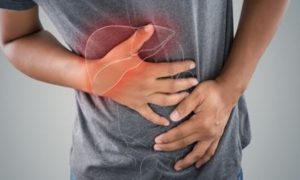Ice cream-induced headaches can be sudden and sharp. Here are expert tips to prevent brain freeze.
No matter how bad your day is going, a scoop of ice cream always does the trick and fills your heart with happiness and comfort. However, for many, a quick bite from an ice cream cone or cup can result in a sudden and spitting headache. The ice cream-induced headache also known as brain freeze is temporary and disappears within few seconds but is enough to play a spoilsport. Enjoying your favourite frozen dessert in summer is a simple joy nobody wants to give up, so it’s best to follow certain tips that can alleviate or prevent this pain.
Let’s understand what actually causes ice cream headache or brain freeze first from experts.
Read More: World Thyroid Day 2023: 7 daily drinks to improve thyroid function
WHAT IS ICE CREAM HEADACHE
“Most people have experienced an ice cream headache or cold-stimulus headache that can feel like a sharp pain along with a blocked feeling surrounding the whole head. This pain occurs due to sudden constriction and numbness of blood vessels in the roof of the mouth after eating something cold. The pain can last anywhere from 20 seconds up to an hour depending on the severity of symptoms. Most cold-stimulated headaches go away within 2 minutes of occurring,” says Dr. Nitti Kapoor Kaushal Consultant- Neurology Manipal Hospital Patiala.
While ice cream headache is said to be harmless and goes away on its own, if the same persists for several hours or occurs too frequently, it’s time to consult a doctor.
Read More: Heat Stroke: Warning Signs To Look Out For, Steps To Take To Beat Heat Exhaustion
SYMPTOMS OF ICE CREAM HEADACHE
In case, you are still not sure if what you are having after eating a cold treat is an ice cream headache or not, here are some tell-tale signs explained by Dr Syed Osman, Consultant – Neurology, CARE Hospitals, HITEC City, Hyderabad.
Ice cream headaches typically exhibit the following characteristics:
1. Sudden onset: The headache emerges suddenly, usually within seconds of consuming something cold.
2. Intense pain: The pain is often described as sharp, stabbing, or throbbing, primarily located in the front of the head.
3. Duration: The headache tends to be short-lived, lasting for a few seconds up to a couple of minutes.
4. Possible radiation: The pain may radiate to other areas, such as the temples, forehead, or occasionally the back of the head.
Read More: A vaccine for pancreatic cancer?
CAUSES OF ICE CREAM HEADACHE
Cold-stimulated pain is mostly caused by the intake of very cold food and beverages such as ice cream, and cold drinks but it can also happen when a person is more sensitive to temperature changes or when they eat something cold too quickly.
Dr Nitti says, that while the exact cause of ice cream headache is not fully understood, but a prevailing theory suggests that the rapid cooling and subsequent dilation of blood vessels play a role.
“When you consume something cold, like ice cream, the cold temperature quickly constricts the blood vessels in the roof of the mouth and the back of the throat. This initial constriction is followed by a rapid expansion of the blood vessels. The sudden expansion triggers pain receptors in the surrounding nerves, leading to the sensation of a headache,” she says.
HOW TO PREVENT ICE CREAM HEADACHE
Dr Osman suggests following preventive measures to combat ice cream headaches or reduce their intensity:
1. Slow down consumption: Avoid consuming cold foods or drinks too quickly. Take small bites or sips and allow the food or beverage to warm up slightly in your mouth before swallowing.
2. Warm stimulus: If you feel an ice cream headache coming on, try pressing your tongue or the roof of your mouth against the warmer part of your mouth, such as the palate. The warmth can help counteract the rapid constriction and expansion of blood vessels, alleviating the pain.
3. Identify triggers: Pay attention to specific cold foods or drinks that consistently trigger ice cream headaches for you. Once identified, you can limit or avoid these triggers to minimize the likelihood of experiencing a headache.
4. Use a straw: When consuming cold beverages, using a straw can help bypass direct contact between the cold liquid and the roof of your mouth, potentially reducing the occurrence of headaches.
5. Apply warmth: Applying a warm compress or drinking a warm beverage can provide relief by gradually warming the affected area and easing the constriction of blood vessels.
6. Relaxation techniques: Employing relaxation techniques like deep breathing, meditation, or mindfulness exercises may help manage the discomfort associated with ice cream headaches.
“To prevent this kind of headache in the future, the person can be mindful when they are consuming cold eatables, they should wait for the food to reach a normal temperature and use a straw to minimize the contact of cold substances to the roof of the mouth. Another quick tip people can use to help with brain freeze is sticking their tongue to the roof of the mouth after consuming cold tems to warm up the area,” concludes Dr Nitti.



































